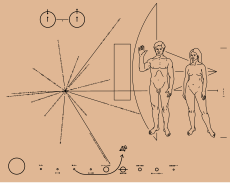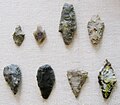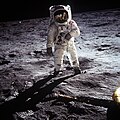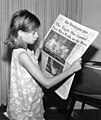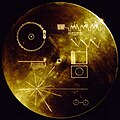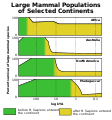Homo sapiens
any member of Homo sapiens, unique extant species of the genus Homo | |||||
| Upload media | |||||
| Spoken text audio | |||||
|---|---|---|---|---|---|
| Pronunciation audio | |||||
| Instance of |
| ||||
| Subclass of |
| ||||
| Part of | |||||
| Facet of | |||||
| Has part(s) | |||||
| Physically interacts with | |||||
| Different from | |||||
| Said to be the same as | Homo sapiens | ||||
| |||||
- English: Human
- Acèh: tokoh
- адыгабзэ: цӏыф
- تونسي: عبد
- Afrikaans: Mens
- Alemannisch: Mensch
- አማርኛ: የሰው ልጅ
- aragonés: Humán
- अंगिका: मनुष्य
- شامي: إنسان
- العربية: إنسان
- ܐܪܡܝܐ: ܒܪ ܐܢܫܐ
- جازايرية: بنادم
- الدارجة: بنادم
- مصرى: انسان
- অসমীয়া: মানুহ
- asturianu: Humanu
- Atikamekw: Iriniw
- авар: Чи
- अवधी: मनई
- Aymar aru: Jaqi
- azərbaycanca: İnsan
- تۆرکجه: اینسان
- башҡортса: Кеше
- Basa Bali: Manusa
- Boarisch: Mensch
- Bikol Central: Tawo
- беларуская: Чалавек
- беларуская (тарашкевіца): чалавек
- Betawi: Manusia
- български: Човек
- भोजपुरी: मानुस
- भोजपुरी: 𑂧𑂢𑂳𑂭𑂹𑂨
- Banjar: Manusia
- bamanankan: mɔgɔ
- বাংলা: মানুষ
- བོད་ཡིག: འགྲོ་བ་མི།
- brezhoneg: Den
- bosanski: Čovjek
- Batak Mandailing: Alak
- буряад: Ухаанта хүн
- català: Ésser humà
- 閩東語 / Mìng-dĕ̤ng-ngṳ̄: Nè̤ng
- нохчийн: Адам
- Cebuano: Tawo
- ᏣᎳᎩ: ᏴᏫ
- کوردی: مرۆڤ
- corsu: Omu
- qırımtatarca: insan
- čeština: Člověk moudrý
- kaszëbsczi: człowiek
- словѣньскъ / ⰔⰎⰑⰂⰡⰐⰠⰔⰍⰟ: чловѣкъ
- чӑвашла: Çын
- Cymraeg: Bod dynol
- dansk: Menneske
- dagbanli: Ninsala
- Deutsch: Mensch
- Dagaare: nensaala
- Zazaki: Merdım
- dolnoserbski: cłowjek
- डोटेली: मान्सु
- eʋegbe: ame
- Ελληνικά: Άνθρωπος
- Canadian English: human
- British English: human
- American English: human
- Esperanto: Homo
- español: Ser humano
- eesti: Inimene
- euskara: Gizaki
- فارسی: انسان
- Fulfulde: ɓii aadama
- suomi: Ihminen
- føroyskt: Menniskja
- fɔ̀ngbè: gbɛtɔ
- français: Homme moderne
- Nordfriisk: Minsk
- furlan: Uman
- Frysk: Minske
- Gaeilge: Duine
- Ga: gbɔmɔ
- 贛語: 人
- kriyòl gwiyannen: Mounité
- Gàidhlig: Mac an duine
- galego: Ser humano
- گیلکی: آدم
- Avañe'ẽ: Yvypóra
- Ghanaian Pidgin: human
- Ἀρχαία ἑλληνικὴ: ἄνθρωπος
- Alemannisch: Mänsch
- ગુજરાતી: મનુષ્ય
- farefare: nera
- gungbe: gbẹtọ
- Hausa: Ɗan Adam
- 客家語 / Hak-kâ-ngî: Ngìn
- עברית: אדם
- हिन्दी: मनुष्य
- Fiji Hindi: Insaan
- hrvatski: Čovjek
- hornjoserbsce: čłowjek
- Kreyòl ayisyen: Moun
- magyar: Ember
- հայերեն: Մարդ բանական
- interlingua: Esser human
- Jaku Iban: Mensia
- Bahasa Indonesia: Manusia
- Igbo: Madụ̀
- Ilokano: Tao
- гӀалгӀай: Саг
- Ido: Homo
- íslenska: Maður
- italiano: umano
- ᐃᓄᒃᑎᑐᑦ / inuktitut: ᐄᒃ
- 日本語: ヒト
- Patois: Yuuman
- la .lojban.: remna
- Jawa: Manungsa
- ქართული: ადამიანი
- Qaraqalpaqsha: Insan
- Taqbaylit: Afgan
- Tyap: A̱tyubishyi
- Kongo: Muntu
- Kumoring: Manusia
- қазақша: Адам
- қазақша (кирил): адам
- ភាសាខ្មែរ: មនុស្ស
- ಕನ್ನಡ: ಮಾನವ
- 한국어: 사람
- перем коми: Морт
- kanuri: kam
- Kinaray-a: tawu
- कॉशुर / کٲشُر: اِنسان
- Ripoarisch: Minsh
- kurdî: Mirov
- kurdî (latînî): mirov
- коми: Морт
- kernowek: Tus
- кыргызча: Киши
- Latina: Gens humana, Homo
- Lëtzebuergesch: Mënsch
- лакку: Инсан
- лезги: Кас
- Lingua Franca Nova: Umana
- Luganda: Omuntu
- Limburgs: Mins
- Ligure: Ëse uman
- Ladin: Porsona
- lombard: uman
- lingála: Moto
- ລາວ: ມະນຸດ
- lietuvių: Žmogus
- latgaļu: Cylvāks
- latviešu: Cilvēks
- 文言: 人
- Lazuri: k'oçi
- मैथिली: लोक
- Basa Banyumasan: tokoh
- мокшень: Ломанць
- Malagasy: Olombelona
- олык марий: Айдеме
- Māori: tāngata
- Minangkabau: Manusia
- македонски: Човек
- മലയാളം: മനുഷ്യൻ
- монгол: Хүн
- ꯃꯤꯇꯩ ꯂꯣꯟ: ꯃꯤꯑꯣꯏꯕ
- moore: neda
- मराठी: मानव
- Bahasa Melayu: Manusia
- بهاس ملايو: ماءنسي
- Malti: Bniedem
- Mirandés: Houmano
- မြန်မာဘာသာ: လူသား
- эрзянь: Ломань
- مازِرونی: آدم
- Nāhuatl: Tlacatl
- 閩南語 / Bân-lâm-gú: lâng
- 閩南語: 人
- Napulitano: umane
- norsk bokmål: menneske
- Plattdüütsch: Minsch
- Nedersaksies: mense
- नेपाली: मानिस
- नेपाल भाषा: मनू
- Nederlands: Mens
- norsk nynorsk: Menneske
- norsk: Menneske
- Novial: home
- ߒߞߏ: ߡߐ߱
- Diné bizaad: diné
- occitan: Èsser uman
- livvinkarjala: ristikanzu
- Oromoo: Nama
- ଓଡ଼ିଆ: ମଣିଷ
- ирон: Адæймаг
- لسان عثمانى: ينسان
- ਪੰਜਾਬੀ: ਮਨੁੱਖ
- Kapampangan: Tau
- Papiamentu: Hende
- Naijá: pesin
- Pälzisch: Mensch
- पालि: मनुस्सो
- Norfuk / Pitkern: Salan
- polski: Człowiek rozumny
- Piemontèis: Òm
- پنجابی: انسان
- Ποντιακά: άνθρωπος
- پښتو: انسان
- português: Humano
- português do Brasil: ser humano
- pinayuanan: caucau
- Runa Simi: Runa
- rumantsch: Uman
- romani čhib: Manush
- ikirundi: Ikiremwa muntu
- română: Om
- русский: Человек разумный
- русиньскый: чоловік
- armãneashti: omu
- 沖縄口: ヒト
- संस्कृतम्: मनुष्यः
- саха тыла: Киhи
- ᱥᱟᱱᱛᱟᱲᱤ: ᱢᱟᱹᱱᱢᱤ
- sicilianu: Umanu
- Scots: Bodie
- سنڌي: انسان
- davvisámegiella: Olmmoš
- žemaitėška: žmuogos
- srpskohrvatski / српскохрватски: Čovjek
- Taclḥit: Afgan
- සිංහල: මිනිසා
- Simple English: Human
- slovenčina: Človek rozumný
- slovenščina: Človek
- anarâškielâ: olmooš
- nuõrttsääʹmǩiõll: ooumaž
- chiShona: Munhu
- Soomaaliga: Aadanaha
- shqip: Njeriu
- српски / srpski: Човек
- српски (ћирилица): човек
- srpski (latinica): čovek
- Seeltersk: moanske
- Sunda: Manusa
- svenska: Människa
- Kiswahili: Binadamu
- ślůnski: Czowjek
- Sakizaya: tademaw
- தமிழ்: மனிதர்
- Tayal: squliq
- ತುಳು: ಮಾನವೆ
- తెలుగు: మానవుడు
- тоҷикӣ: Инсон
- тоҷикӣ: инсон
- tojikī: inson
- ไทย: มนุษย์/คน
- ትግርኛ: ሰብ
- ትግሬ: ኣዳም
- Türkmençe: Adam
- Tagalog: Tao
- tolışi: Inson
- toki pona: jan
- Türkçe: İnsan
- Xitsonga: Vanhu
- татарча / tatarça: Акыллы кеше
- татарча: кеше
- tatarça: keşe
- chiTumbuka: Munthu
- Twi: Nnipa
- удмурт: адями
- ئۇيغۇرچە / Uyghurche: ئادەم
- українська: Людина
- اردو: انسان
- oʻzbekcha / ўзбекча: Odam
- vèneto: èsar uman
- vepsän kel’: Ristit
- Tiếng Việt: Loài người
- West-Vlams: Mens
- Volapük: men
- võro: inemine
- walon: Djin
- Winaray: Tawo
- 吴语: 人
- isiXhosa: Abantu
- მარგალური: ადამიერი
- ייִדיש: מענטש
- Yorùbá: Ọmọnìyàn
- 粵語: 人
- Vahcuengh: Vunz
- ⵜⴰⵎⴰⵣⵉⵖⵜ ⵜⴰⵏⴰⵡⴰⵢⵜ: ⴰⴼⴳⴰⵏ
- 中文: 人
- 中文(中国大陆): 人类
- 中文(简体): 人类
- 中文(繁體): 人類
- 中文(香港): 人類
- 中文(澳門): 人類
- 中文(马来西亚): 人类
- 中文(新加坡): 人类
- 中文(臺灣): 人類
- isiZulu: Umuntu
Error in Wikidata: wikidata item 'human' (Q5) property 'instance of' (P31) has a strange value 'organisms known by a particular common name' (Q55983715) (currently accepted values: 'taxon' (Q16521), 'monotypic taxon' (Q310890), 'cultivar group' (Q4150646), 'cultivar' (Q4886), 'fossil taxon' (Q23038290), 'monotypic fossil taxon' (Q47487597), 'clade' (Q713623), 'virus' (Q808), 'ichnotaxon' (Q2568288), 'species aggregate' (Q1297859), 'Wikimedia category' (Q4167836))
- Mammal Species of the World (v3, 2005) link: Homo sapiens Linnaeus, 1758
- Fossilworks PaleoDB link: Homo sapiens Linnaeus 1758
- ITIS link: Homo sapiens Linnaeus, 1758
- IUCN:
 Homo sapiens Linnaeus, 1758 (old web site) (Least Concern)
Homo sapiens Linnaeus, 1758 (old web site) (Least Concern)
In taxonomy, Homo sapiens is the only extant human species. The name is Latin for "wise man" and was introduced in 1758 by Carl Linnaeus (who is himself also the type specimen).
Extinct species of the genus Homo include Homo erectus, extant during roughly 1.9 to 0.4 million years ago, and a number of other species (by some authors considered subspecies of either H. sapiens or H. erectus). H. sapiens idaltu (2003) is a proposed extinct subspecies of H. sapiens.
The age of speciation of H. sapiens out of ancestral H. erectus (or an intermediate species such as Homo antecessor) is estimated to have been roughly 315,000 years ago. Sustained archaic admixture is known to have taken place both in Africa and (following the recent Out-Of-Africa expansion) in Eurasia, between about 100,000 and 30,000 years ago.
The term anatomically modern humans (AMH) is used to distinguish H. sapiens having an anatomy consistent with the range of phenotypes seen in contemporary humans from varieties of extinct archaic humans. This is useful especially for times and regions where anatomically modern and archaic humans co-existed, for example, in Paleolithic Europe.
Earliest evidence for species
[edit]-
Homo Heidelbergensis, a likely precursor to H. sapiens, dating as far back as 800,000 years
-
Partial skull of early human, from Morocco, possibly 160,000 years old
-
Hofmeyr Skull, 35,000 years old, South Africa
-
Kow Swamp skull, 13-9,000 ya
-
16,000-14,000 ya
Archaeological eras
[edit]-
hand tool from Boxgrove, site of H. heidelbergensis, precursor to H. sapiens
-
Fossilized bones, in situ, archaeological site of the Lower Paleolithic Era
-
Stone tools from the Lower Paleolithic Era
-
Stone tool, Middle Paleolithic Era
-
Upper Paleolithic Era stone tools
-
Venus of Willendorf, early human art from the Upper Paleolithic
-
Cave painting of extinct species, Lascaux, from the Upper Paleolithic Era
-
Oil lamp from Lascaux cave site upper paleolithic, 17,000 ya
-
Spear thrower in form of a Mammoth (extinct species), Upper Paleolithic Era
-
Magdalenian Girl, Upper Paleolothic/Mesolithic era
-
stone tools from the Neolithic Era
-
Neolithic representational art
-
Neolithic stone shelter
-
Grave, from Old Neolithic Era
-
Inuit use of meteoritic Iron, by cold forging (hammering and stamping, no heat), prior to the Iron, Bronze or Copper Ages
-
pottery from 7,000 to 6,500 ya, late Neolithic/Early Chalcolithic (Copper Age)
-
Copper Axe of Ötzi, Chalcolithic Era
-
Iron Age Celtic coinage
-
Iron Age weaponry
-
Broiler chicken, proposed by scientists in 2018 as the symbol for the Anthropocene Era, the current era when human modification of the environment has changed the planet. The chicken is the most populous bird on Earth, thanks to their breeding for food by humans.
Anatomical and behavioral features
[edit]These are images showing anatomical and behavioral features relatively unique to the human species, compared to other species.
-
Generalized anatomy (Pioneer 11 plaque)
-
Body, posed next to internal skeleton
-
Fingerprints, toeprints
-
Woman, man and child playing in water (sexual dimorphism, public nudity, water recreation)
-
Girl swimming (adaption to water in children)
-
Humans as natural climbers
-
Cat and human, showing sparse, thin body hair on humans, not found on most mammals or primates (behavior: domestication of animals for companionship)
-
Childbirth
-
Breastfeeding and mother-child bonding
-
Growth in childhood
-
Size differences
-
Reading aloud to children to spur literacy
-
Jesse Owens, track and field athlete (Behavior: athletic competition)
-
Arnold Schwarzenegger, bodybuilder (1974) (compare to female figure) (behavior: strength/muscle display)
-
female bodybuilder (compared to male figure, the similarities between genders at the extremes of physiques)
-
Albert Einstein (Behavior: science and mathematics)
-
Solving a Rubik's Cube (Behavior: spatial reasoning, problem solving)
-
Ishi, Native Californian, making fire with a firestick
-
Inscription of name of one of the predynastic rulers of Egypt, possibly the earliest recorded named human
-
Vessel with the name of one of the earliest rulers of Egypt, thus one of the earliest recorded human names (behavior: naming, record keeping)
-
Yurt interior (shelter)
-
Soldiers advancing through smoke of war (behavior: warfare)
-
"The Nightmare", artistic representation of sleep, and dreams (nightmares)
-
US representative Tammy Duckworth, in a wheelchair with prosthetic limbs (behavior: inclusion of the disabled in society)
-
US president George W. Bush extended family (behavior: strong extended family relations)
-
Aboriginal Australian playing the Didgeridoo, a musical instrument (Behaviors: musicality, body adornment)
-
Illustration of a native of Tasmania, where the entire native population was wiped out (Behavior: replacement by force of one group by another)
-
Auschwitz concentration camp inmate (Behavior: racial and tribal prejudice and genocide)
-
Astronaut Buzz Aldrin on the surface of the Moon, in a space suit (Behaviors: technology and exploration)
-
German dictator Adolf Hitler, collage of photos from speeches (Behavior: oratory and exercise of political power)
-
Muhammad Ali, boxer (Behavior: sport fighting)
-
Vietnam war protest (Behavior: public gathering, public protest)
-
Woman praying, after placing offerings (Behavior: religion)
-
Musician Frank Zappa in concert, raising his middle finger, an obscene gesture for "fuck you" (Behavior: hand gestures, public performance)
-
Wedding ceremony, California, with audience, couple, and officiator, in a church (behavior: marriage rites)
-
Funeral (behavior: funerary rites)
-
Ossuary (behavior: care for human remains)
-
Gravesite for the unclaimed dead of the Jonestown Massacre (behavior: cults of personality)
-
direct eye contact with no threat response
-
kissing
-
Man smoking (old age. behavior: drug use)
-
Woman riding bicycle while using music player (behavior: inventions, multitasking)
-
Tool use
-
Reading
-
Inupiat family, Alaska. Clothing as adaptation to environment
-
Queen of England and her Consort (behavior: clothing as signifier of rank or title)
-
Woman wearing skin tight jeans (behavior: clothing and body language as signallers of sexuality)
-
Sexual intercourse between a man and a woman
-
Homosexuality
-
Dance
-
Gamelan (behavior: group musical performance in synchrony)
-
jewelry, body adornment
-
Agriculture
-
Ox driven plow (behavior: domestication of animals)
-
People on horseback (Behavior: use of animals for transport)
-
Chess (Games)
-
Tears (crying, emotion)
-
Meditation
-
Weaving, hand articulation (opposable thumbs)
-
Boys playing at having a car accident (behavior: play, mimicry of adult behaviors)
-
Spinner, textile factory (Behavior: involvement of children in economy)
-
Joker cosplayer (behavior: makeup and costumes, roleplaying)
-
Actors performing Romeo and Juliet (behavior: theatrical performance)
-
Classroom (Behavior: teaching, extrasomatic information)
-
Calligrapher (Behavior: writing)
-
Carnival, Rio de Janeiro, Brazil (Behavior: public festivals and celebrations)
-
Pyramids of Gizeh (Behavior: planning and coordination on large scale projects)
-
Worker and foreman at factory (Behavior: division of labor/specialized workers)
-
Printing plate for Ming Dynasty Chinese paper money (behavior: printing, money)
-
Cuneiform tablet (behavior: writing systems)
-
Hoover Dam (behavior: modifying the natural environment to provide for human needs)
-
video of work at communicating with dolphins (behavior: attempts to communicate with other intelligent creatures on Earth)
-
The Golden Record, now traveling in interstellar space (behavior: attempts to communicate with other intelligent beings in the universe)
Scientific study of the species
[edit]-
Vitruvian man, by Leonardo da Vinci, an early study of human anatomy
-
Study of human muscles, by Vesalius, a pioneer in anatomy
-
Bernardino de Sahagún, considered the founder of modern anthropology, the study of humans
-
Linnaeus, the developer of binomial nomenclature for all life, and the Type Specimen for H. sapiens
-
Map of racial groupings. This method is no longer considered scientific, but was so at the time of its development
-
Prehistoric human migration, by Mitochondrial DNA variance
-
World population density
-
Effects of Humans on animal populations




